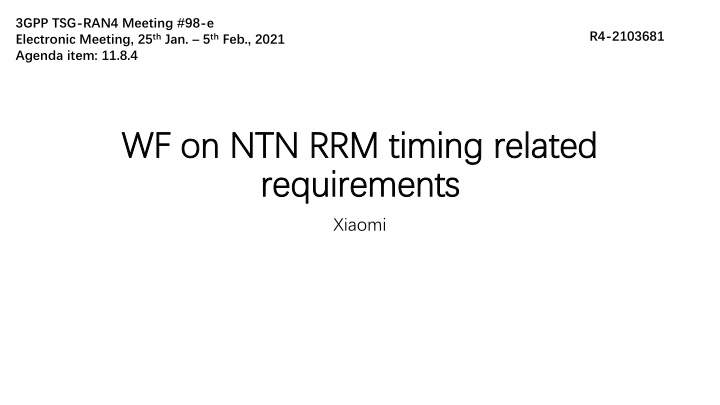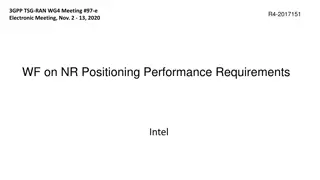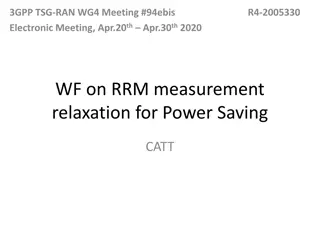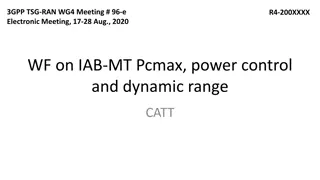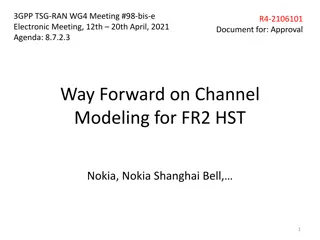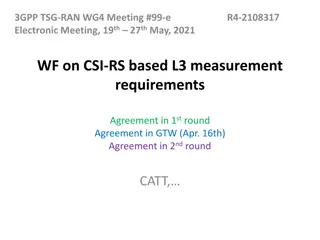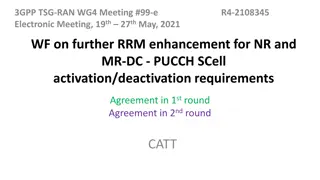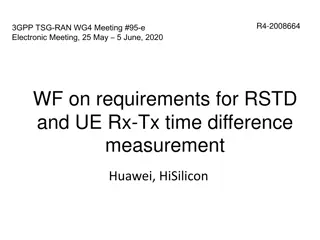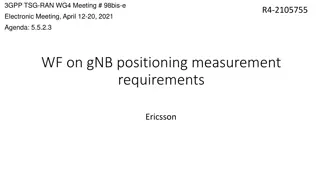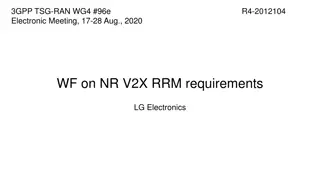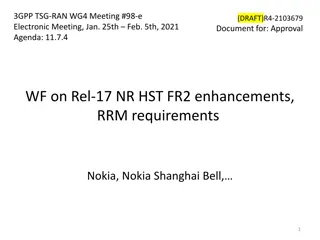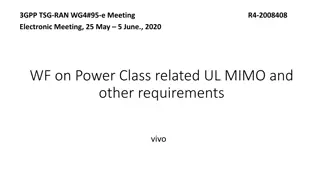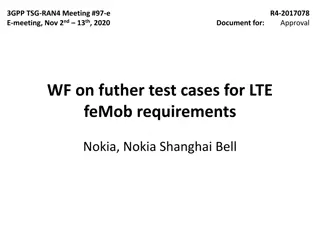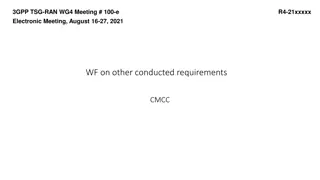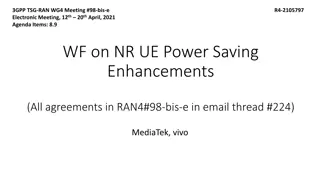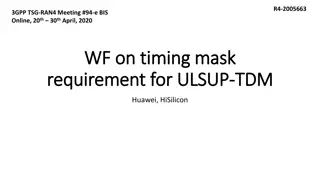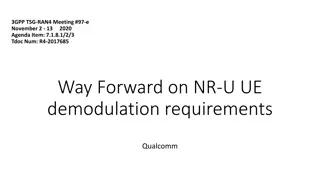NTN RRM Timing Related Requirements for Xiaomi Devices at 3GPP TSG-RAN4 Meeting #98-e
The agenda item for the 3GPP TSG-RAN4 Meeting #98-e involves discussing NTN RRM timing related requirements, specifically focusing on UE timing synchronization for Xiaomi devices. Key aspects include UE transmit timing error limits, timing advance accuracy, and UE timer accuracy requirements for NTN networks. Various options are being considered to define these timing requirements effectively within the network.
Download Presentation

Please find below an Image/Link to download the presentation.
The content on the website is provided AS IS for your information and personal use only. It may not be sold, licensed, or shared on other websites without obtaining consent from the author.If you encounter any issues during the download, it is possible that the publisher has removed the file from their server.
You are allowed to download the files provided on this website for personal or commercial use, subject to the condition that they are used lawfully. All files are the property of their respective owners.
The content on the website is provided AS IS for your information and personal use only. It may not be sold, licensed, or shared on other websites without obtaining consent from the author.
E N D
Presentation Transcript
3GPP TSG-RAN4 Meeting #98-e Electronic Meeting, 25thJan. 5thFeb., 2021 Agenda item: 11.8.4 R4-2103681 WF on NTN RRM timing related WF on NTN RRM timing related requirements requirements Xiaomi
Background The WF (R4-2017350) on NTN RRM requirement was approved in RAN4#97-e meeting NTN UL Time synchronization requirements, the following requirements shall be defined but require RAN1 further progress: Timing Advance adjustment accuracy Timing error limits & UE Time alignment behavior Timing Issues and Requirements for UE with 2 feeder-links RAN1 Agreement in RAN1#103-e: An NTN UE in RRC_IDLE and RRC_INACTIVE states is required to at least support UE specific TA calculation based at least on its GNSS-acquired position and the serving satellite ephemeris.
NTN UE UL timing synchronization requirements For NTN networks, RAN4 is to study how to define the timing requirements: Option 1: Define the requirements on UE transmit timing error limit and timing advance adjustment accuracy, provided that: UE self-estimating error of NTA is counted into the UE transmit timing error. Timing advance adjustment accuracy is derived from the sampling interval with minimum UL bandwidth. Option 2: Define the requirements on UE transmit timing error limit and timing advance adjustment accuracy, provided that: UE self-estimating error of NTA will be counted into the timing advance adjustment accracy. UE transmit timing error is derived from the UE capability of estimating downlink timing Option 3: Define the requirements on UE transmit timing error limit, UE self- estimating accuracy of NTA and timing advance adjustment accuracy, provided that: UE transmit timing error is derived from the UE capability of estimating downlink timing Timing advance adjustment accuracy is derived from the sampling interval with minimum UL bandwidth. UE self-estimating accuracy is derived from the accuracy of UE GNSS-acquired position and the serving satellite position Other option is not precluded
NTN UE transmit timing requirements Te: Timing Error Limit Use existing Te requirements defined in TS 38.133, Table 7.1.2-1, as baseline for R17 NR NTN RAN4 is to further investigate Te based on existing Te requirements defined in TS 38.133 ?TA offset FFS on whether the existing ?TA offsetvalue defined in Table 7.1.2-2 in TS38.133 can be reused or not Gradual timing adjustment RAN4 is to study the gradual timing adjustment rules for NR NTN including: Tq (Maximum Autonomous Time Adjustment Step) Tp (Minimum Aggregate Adjustment rate)
NTN UE timer accuracy Reuse the UE timer accuracy requirements as defined in section 7.2 in TS 38.133 for Rel-17 NR NTN
Timing advance TA adjustment accuracy requirement Timing Advance adjustment accuracy requirement depends on the mechanism of TA adjustment step size determined by RAN1 and the total uncertainty budget. FFS: Timing Advance adjustment accuracy scales inversely proportional to SCS ( 1/4 TA- step defined in TS38.133) UE specific TA estimation adjustment accuracy requirement RAN4 is to define the requirements for UE specific TA estimation self-estimating accuracy FFS on how to capture the UE specific TA estimation self-estimating accuracy Option 1: the UE specific TA estimation accuracy self-estimating error of NTA is counted into the UE transmit timing error requirement Option 2: the UE specific TA estimation accuracy self-estimating error of NTA is counted into the timing advance adjustment accuracy requirement Option 3: the UE specific TA estimation accuracy self-estimating error of NTA is defined as a separate accuracy requirement Other option is not precluded
